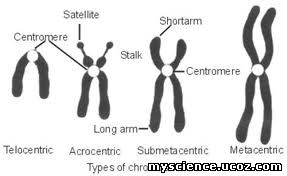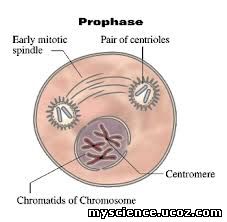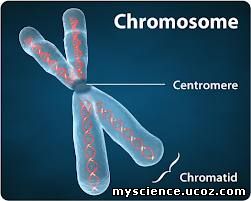CHROMOSOMES
(Chroma-colour, soma-body)
Karl Nageli (1842) observed deeply stained thread like structures
in the nucleus later Waldayer (1888) named them as chromosomes .
Sutton and Boveri (1902) proposed chromosome
theory which states that these are the vehicles
of heredity.
Chromosomes involved in controlling
and regulating the activities of a
cell which transfers the genetic traits
from one generation to next generation, hence referred as physical basis of heredity.
Ø Morphology
Structure, size, shape, number of chromosomes differ from
species to species in both plants and animals but remains constant
in each species and maintain specifity and
stability.
§
Size: 1µm-50µm in length, 0.2 µm -2 µm in diameter
§ In
plants (30 µm)-Trillium they are bigger
than the animals
§ Somatic cell: 2n (diploid)
§ Gametes: n (haploid)
§
Shape: V,L,J&
I
Ø Classification
Based on the number of centromeres,
they are of five types as follows
·
Acentric
·
Monocentric
·
Dicentric
·
Holocentric
·
Polycentric)
Monocentric chromosomes are further classified on the basis
of the position of the centromeres. They are of four types as follows:
·
Metacentric(V
Shape): centromeres present in middle point, both arms are equal in length
during anaphase
·
Submetacentric(L
Shape): away from the middle point and arms are unequal, during anaphase
·
Acrocentric
(J Shape): towards one side, short and long arms during anaphase.
·
Telocentric
(I Shape): end of the arm, during anaphase.

Ø
Number
In plants
and animals , no of chromosomes is
represented by diploid condition.
·
Vegetative/somatic
cells: diploid cells (2n)
·
Gametes/reproductive:
haploid cells (n)
Examples:
Plants
o Pisum
sativum-14
o Zea
mays-16
o Oryza
sativa-20
o Nicotiana
tobacum-24
o Human
beings-46
o Ophioglossum-1260
(highest)
·
Karyotype:
single set of chromosomes.
·
Idiogram:
diagrammatic representation of single set of chromosomes.
·
Gene:
a unit of heredity which transfer from parent to offspring
·
Genome:
genes constituting a single set of chromosomes.
·
Alleles:
pair of genes.
·
Somatic:
any cell of an organism other than reproductive cell.
·
Gamete:
reproduction cell which unite during sexual reproduction to form a new cell zygote.
Ø
Structure
The body of the chromosomes is divided into three parts as follows:
·
Pellicle:
Outermost covering
·
Matrix:
Ground substance
·
Chromonemata:
Chromatids
A
chromosome appears clearly during metaphase of cell division.
Chromatin material
transforms into chromosomes and becomes thick and stout.
Ø
Primary
constriction
·
Metaphase chromosomes show a colorless
constriction (centromere/kinetochore/kinomere).
·
Centromeres
help in the attachment of spindle fibres.
·
On both sides of centromeres, they are long
cylindrical parts known as arms
which splits into 2 parts known as chromatids are of two types
§ Paranemic coil: loose coil, separated
easily
§ Plectonemic coil: tight coil, cannot
separated
·
Each arm is bounded by a transparent coat known
as pellicle. Inside this, matrix is
present.
·
In this tightly coiled DNA extends from one end of arm to the other.
·
The ends of chromatid arms exhibit polarity
known as telomeres.
·
Due to the polarity,
chromosomes do not fuse with one another and maintains as individual.
·
During prophase,
chromosomes appear as beads with
swellings and constrictions alternating with one another known as centromeres, if they are bigger in size
they are known as knobs.
 
Ø
Secondary
constriction
The part of the chromosome arm present near
to the nuclear organization appears like a sphere/satellite/trebent. Such chromosomes
are known as SAT chromosomes (Sine-Acid-Thymonucleonic)
.these is present without DNA.Such
chromosomes have secondary constrictions from which nucleoli are formed known
as nuclear organizers.
§ SAT: Two chromosomes are present in each diploid nucleus which plays a vital role in the formation of nucleolus.
Ø
Chemical
nature
·
It is composed of genetic material associated
with histone proteins, hence they are chemically called as nucleo-proteins.
·
When chromosomes are stained with
acetocarmine/acetoorcein, some parts will appear darker; those areas are called
as heterochromatin (inactive genes). If
they are lighter, those areas are Euchromatin(active genes)
Ø
Types
·
Autosomes:
These are more in number which determines the somatic activities of cell like growth, development etc..,
·
Allosomes/Sex chromosomes: Determines the sexual
characters of organisms in human beings which are identified as X, Y chromosomes.
Ø
Function
·
Helps in reproduction
process by the duplication of the genetic material to pass on to the next
generation.
·
Acts
as controllers of heredity.
| 




